| 30 March |
• yesterday • tomorrow |
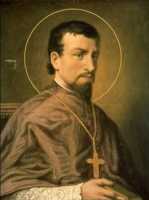
Antonio Daveluy
20 September as one of the Martyrs of Korea
Born to a prominent and pious family, his father was a factory owner, city councilman, and government official; Antoine and two of his brothers became priests. He studied at the Saint Sulpice Seminary in Issy-les-Moulineaux, Paris, France in October 1834, and was ordained a priest on 18 December 1841. Assistant pastor in a parish in Roye, France. Joined La Société des Missions Etrangères (Paris Foreign Missions Society) on 4 October 1843, and left for missionary work on 6 February 1844, intending to work on the Japanese Ryuku Islands. However, in Macau he was convinced by Bishop Jean-Joseph-Jean-Baptiste Ferréol to go to Korea instead; he travelled there with Saint Andrew Kim Taegon, and arrived in October 1846.
As part of his work, Father Antoine became fluent in Korean, and wrote a French–Korean dictionary, a history of Catholicism in Korea, revised material intended for new converts, and translated a number of works to Korean. Seminary rector in 1848. Appointed co-adjutor bishop of Korea and titular bishop of Akka by Pope Pius IX on 13 November 1855. In the late 1850's he researched and wrote biographies of the martyrs and confessors of Korea. His missionary work in the Haut Nai-hpo region in 1865 and Keu-to-ri region in the spring of 1866 brought many converts to the faith. He became Apostolic Vicar of Korea on 8 March 1866 following the martyrdom of his predecessor, Saint Siméon-François Berneux. Bishop Antoine was arrested three days later on 11 March 1866; he was imprisoned and tortured for his faith and his work. He was given a chance in court to denouce Christianity, but instead he explained it to the judges in simple terms. Martyr.
16 March 1818 in the parish of Saint-Leu, Amiens, Somme, France
• beheaded on Good Friday, 30 March 1866 at the Galmaemot naval base, Boryeong, Chungcheong-do, South Korea
• the executioner took three blows to kill him, with long pauses to argue over what he was being paid for the job
• buried in the sand at the execution site
• body exhumed in June 1866 and re-buried in the district of Hong-san, Korea
• body exhumed in March 1882 and sent to Nagasaki, Japan to prevent desecration in a renewed persecution
• relics enshrined in the cathedral in Seoul, South Korea in 1900
6 May 1984 by Pope John Paul II
https://catholicsaints.info/saint-marie-nicolas-antoine-daveluy/
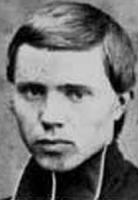
20 September as one of the Martyrs of Korea
Eldest of five children in a peasant family; his father was a farmer, his mother a seamstress. Pierre was baptized in Verteuil, France on 26 May 1837, confirmed in Aizecq, France on 21 May 1844, and made his first Communion on 2 May 1847. He early felt a call to the priesthood, walked seven miles a day to take Latin lessons, and entered the Petit Séminaire de Richemont near Cognac, France in 1852, then the Société des Missions Etrangères (Paris Foreign Missions Society) seminary in Paris, France in 1857. Ordained a priest on 14 June 1862. He left for missionary work in Korea on 18 August 1862, arriving in June 1863; he studied the language and customs in Seoul and Saemgol, and then began working in the Naep'o region. Worked with Saint Marie-Nicolas-Antoine Daveluy and his bishop, Saint Siméon-François Berneux. To prevent his parishioners in Saemgol from being interrogated and abused by government authorities, he surrendered in March 1866; he was taken to Seoul, imprisoned, tortured, and finally executed for his faith and his work. Martyr.
8 April 1837 in Aizecq, Charente, France
• beheaded on 30 March 1866 in Galmaemot, Boryeong, Chungcheong-do, South Korea
• buried in the sand at the execution site
• remains later recovered and buried in the cathedral in Seoul, South Korea
• some relics in the Salle des Martyrs des Missions Étrangères in Paris, France
6 May 1984 by Pope John Paul II
https://catholicsaints.info/saint-pierre-aumaitre/
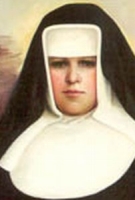
• Helen Kafka
• Helena Kafka
• Maria Restituta Kafka
• Sister Restituta
Sixth daughter of a shoemaker. Grew up in Vienna, Austria. Worked as a sales clerk. Nurse. Joined the Franciscan Sisters of Christian Charity (Hartmannschwestern) in 1914, taking the name Restituta after an early Church martyr. Worked for twenty years as a surgical nurse, beginning in 1919. Known as a protector of the poor and oppressed. Vocal opponent of the Nazis after Anschluss, the German take over of Austria. Sister Restituta hung a crucifix in every room of a new hospital wing. The Nazis ordered them removed; Restituta refused. She was arrested by the Gestapo in 1942. Sentenced to death on 28 October 1942 for “aiding and abetting the enemy in the betrayal of the fatherland and for plotting high treason”; Martin Bormann decided that her execution would provide “effective intimidation” for other opponents of the Nazis. She spent her remaining time in prison caring for other prisoners; even the Communist prisoners spoke well of her. She was offered her freedom if she would abandon her religious community; she declined. Martyr.
1 May 1894 in Brno, Czechoslovakia (modern Czech Republic) as Helena Kafka
beheaded on 30 March 1943 at Vienna, Austria
21 June 1998 by Pope John Paul II
I have lived for Christ; I want to die for Christ. - Blessed Mary's last recorded words
https://catholicsaints.info/blessed-mary-restituta-kafka/
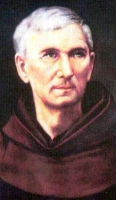
• Arcangelo Palmentieri
• Louis
An apprentice cabinet maker as a youth, Arcangelo joined the Franciscan Friars Minor on 1 July 1832, taking the name Ludovico. Priest. Taught philosophy and mathematics to young friars in Naples, Italy. He began working with the poor, founding orphanages and dispensaries. Around 1852 he opened a school dedicated to educating young Africans who had been ransomed from slavery. Founded a school for the deaf and the mute. Established centers for the care of elderly friars. In 1859 he founded the Frati Bigi della Carita (Gray Friars of Charity) to take over work at the institutions he founded; they received Vatican approval in 1877, worked in Italy and with Italian immigrants in the United States, and were disbanded in 1971 due to a lack of members. In 1862 Ludovico founded the female equivalent, the Suore Elisabettiane Bigie (Franciscan Sisters of Saint Elizabeth; Gray Sisters of Saint Elizabeth), who continue their good work today in Italy, the United States, Ethiopia, India, Panama and the Philippines.
11 March 1814 in Casoria, Naples, Italy as Arcangelo Palmentieri
30 March 1885 in Naples, Italy of natural causes
23 November 2014 by Pope Francis
https://catholicsaints.info/saint-ludovico-of-casoria/

• Joachim de Floris
• Joachim of Flora
• Joachim the Prophet
• Joachim von Fiore
• Gioacchino...
Born to a middle class family; his father was a notary. Page to the court of the Norman King Roger of Sicily. Pilgrim to Palestine. Priest. Benedictine Cistercian monk at Santa Maria della Sambucina Abbey near Luzzi, Italy, where he tried to reform the Order. Abbot at Santa Maria di Corazzo Abbey in Calabria, Italy in 1176. Hermit at Pietro Alto in 1183. Left the Cistercian order and founded a congregation at Fiore, Italy c.1190. Mentioned by Dante in the Paradiso as being in heaven. Never officially beatified, he was been referred to as Beatus since his death.
Prolific writer on ascetics, clerical reform, and biblical studies, including treatises on the Gospels, an exposition on Revelations, and a concordence of the Old and New Testaments that were based on a moment of insight he was given upon waking one Easter morning. After his death, his works were used to bolster the arguments of some heretics (the Joachimites) who believed that the year 1260 would usher in the era of the Holy Spirit, replacing the era of Christ, a teaching condemned by the Lateran Council of 1215.
c.1130 at Celico, Calabria, Kingdom of Naples (in modern Italy)
30 March 1202 at Fiore, Calabria, Italy of natural causes
https://catholicsaints.info/blessed-joachim-of-fiore/
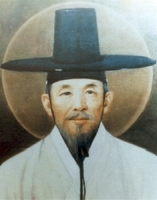
• Yosep Jang Ju-gi
• Joseph, Giuseppe, José
20 September as one of the Martyrs of Korea
Born to a wealthy family with a history of working as diplomats. Married. An adult convert to Christianity, he was baptized at age 26 along with his entire family. He served as a catechist, conducting classes first in his home and then in a small building he bought and maintained for that purpose in Paeron, Korea. On four occassions, Iosephus hid in the mountains to avoid government persecution of Christians, and he finally moved to the Jecheon area to escape them in 1845. When Saint Siméon-François Berneux built a seminary in the area, he offered his house for its use, he worked in its administration, and he and his wife farmed to help feed the seminarians. He and his wife were arrested in March 1866. A local official arranged their release, but five days later, Iosephus was arrested again. He admitted in court to being a Christian, teaching Christianity, to helping missionaries, and to owning the building where the catechists had worked for many years. He was imprisoned, tortured and eventually executed for his faith and his work. Martyr.
1803 in Suwon, Kyonggi-do, South Korea
beheaded on 30 March 1866 in Galmaemot, Boryeong, Chungcheong-do, South Korea
6 May 1984 by Pope John Paul II
https://catholicsaints.info/saint-iosephus-chang-chu-gi/

Secondo di Asti
• 1st Tuesday in May (Asti, Italy)
• 1 June (Asti, Italy; translation of his relics)
Born to the patrician class. Soldier; subaltern officer in the imperial Roman army, a low rank which probably indicates he was a young man. Convert to Christianity, baptised in Milan, Italy. He illegally gave a Christian burial to the martyr Saint Marcian of Tortona, and then fled to his family in Asti, Italy. There he was arrested, tortured and beheaded. Martyr. A number of legends have grown up around him, but they're just that - legends. The large market that grew up around the cathedral in Asti, which cathedral holds his relics, led to a tradition of patronage of bankers and merchants by Secundus.
• beheaded c.119 at Asti, Italy
• relics in the cathedral in Asti
• soldier holding a miniature of the town of Asti, Italy
• young soldier, sometimes on horseback, sometimes with a banner, and often in the period attire of the artist, not of Secundus
• receiving a palm of martyrdom from an angel
• with the Theban Legion
• bankers
• merchants
• Palio di Asti
• Asti, Italy, city of
• Asti, Italy, diocese of
https://catholicsaints.info/saint-secundus-of-asti/
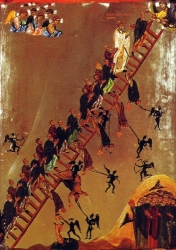
• John of the Ladder
• John Scholasticus
• John the Sinaita
Well educated and came to adulthood in a intellectual environment. Monk on Mount Sinai at age 16. Hermit in various places in the Arabian Desert. Abbot at Mount Sinai at age 75. Just before his death he resigned his position to return to his solitary life. Ascetical writer whose works have for 15 centuries influenced those seeking the holy life.
between 505 and 579 in Syria
between 605 and 649 on Mount Sinai of natural causes
• abbot carrying a ladder
• man having a vision of a ladder being scaled by monks
• monk on a ladder
A chaste man is completely oblivious to the difference between bodies. The rule and limit of absolute chastity is to have the same feelings regarding animate and inanimate beings, rational and irrational. - Saint John Climacus
https://catholicsaints.info/saint-john-climacus/
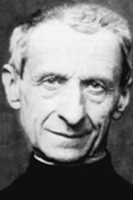
18 May (Salesians)
Born to a wealthy, pious family. Studied at the University of Turin, and the College of Saint Sulpice in Paris, France. Ordained in 1851 at the Church of the Visitation. After studies in France, he returned to Italy to take the assignment of “provisional director” of an impoverished college for young working men; he would spend his career there.
Founded the Society of Saint Joseph of Turin modelled after and under the patronage of Saint Joseph, the model for working people; the Society still exists, and still supports young apprentices. Founded a center for delinquent boys, the forerunner of Boy's Town and similar institutions. Supported the Catholic Workers Union. Established a national federation to improve the level of Italian journalism. A model for Christian social workers, he was called a Socialist for advocating an 8-hour work day in 1885.
26 October 1828 at Turin, Italy
• 30 March 1900 of natural causes in Turin, Italy
• buried at Church of Saint Barbara, Turin, Italy
3 May 1970 by Pope Paul VI
apprentices
https://catholicsaints.info/saint-leonard-murialdo/
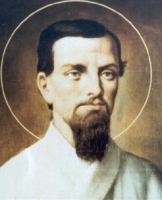
Min
20 September as one of the Martyrs of Korea
One of ten children born to a pious vintner‘s family. Began to study theology in 1851, studying with missionaries who had returned to teach, and was ordained a diocesan parish priest on 29 June 1861. Joined the Société des Missions Etrangères (Paris Foreign Missions Society) on 20 August 1863. Assigned to the missions in Korea in 1864, and after studying the language and customs, he arrived at Chosun on 27 May 1865. Worked with Saint Marie-Nicolas-Antoine Daveluy in the Nappo province, then left for the Dangjin province. Arrested on 12 March 1866 in the government’s anti–Christian persecutions, imprisoned in Seoul, Korea, and then executed for his faith and work. Martyr.
20 October 1836 in Guyonvelle, Haute-Marne, France
• beheaded on 30 March 1866 in Galmaemot, Boryeong, Chungcheong-do, South Korea
• buried in the sand at the execution site
6 May 1984 by Pope John Paul II
I'm sorry to die, not because they are still young, but because I could do nothing for the salvation of my beloved Koreans. – Saint Martin-Luc
https://catholicsaints.info/saint-martin-luc-huin/
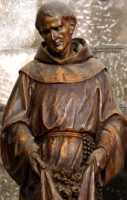
• Peter de Regalado
• Peter Regalado
• Peter Regalati
• Peter Regulatus
Born to a wealth, pious, noble family. His father died when Peter was very young. Tried to join the Franciscans when he was only ten years old. Educated in a Franciscan convent in Valladolid, Spain from age 13. Disciple of Peter de Villacreces in 1404. Franciscan priest. Superior of the convent at Aguilera in 1415. Superior of the convent at Tribulos in 1422. A noted reformer, primarily by setting a good and pious example. Observed nine personal Lenten periods a year. Had the gifts of bi-location, prophecy and miracle working.
1390 at Valladolid, Spain
• 30 March 1456 at Aguilera, Spain of natural causes
• when exhumed in 1782 his body was found incorrupt
29 June 1746 by Pope Benedict XIV
Valladolid, Spain
Franciscan with flames bursting from his heart
https://catholicsaints.info/saint-peter-regalatus/
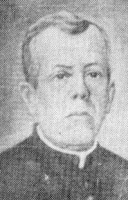
21 May as one of the Martyrs of the Mexican Revolution
Ordained in 1894, Father Julio worked his entire ministry at Mechoacanejo, Jalisco, Mexico. He visited the area ranches, going to people who would not come to the church. Great devotion to the Eucharist. When the Church was suppresed by the state, he conducted Mass on farms and baptized in mountain streams. Arrested on 26 March 1927 for the crime of priesthood. He was tied to a saddle and dragged several days to Leon where General Amaro sentenced him to death. Martyr.
20 December 1866 in Guadalajara, Jalisco, Mexico
• shot on 30 March 1927 at San Julian, Jalisco, Mexico
• body thrown onto a trash heap near his parish church at Mechoacanejo, Jalisco, Mexico
21 May 2000 by Pope John Paul II during the Jubilee of Mexico
My crime is to be a minister of God. I pardon you. - Saint Julio just before executed
https://catholicsaints.info/saint-julio-alvarez-mendoza/

Zozimus of Syracuse
Son of wealthy land owners. Dedicated to Saint Lucy of Syracuse. Entered the monastery of Saint Lucy near Syracuse, Sicily at age seven. At one point as a child, he was unable to bear the quiet of the monastery and the tedium of his chores, and he ran away. His family sent him back to the monastery. There he had a vision of Saint Lucy who seemed angry. In the vision, Our Lady appeared, calmed Lucy, and welcomed the boy back to the monastery.
Zosimus studied under Saint Faustus of Syracuse. Monk for thirty years. During one meeting to choose an abbot, Zozimus was left behind to watch the door and guard the church's relics; the bishop decided this was a man humble enough to be trusted with the task, and made Zozimus abbot. Priest. Chosen the unwilling bishop of Syracuse in 649. Noted for his charity to the poor and his work to educate his parishioners.
c.570 at Syracuse, Sicily
660 of natural causes
https://catholicsaints.info/saint-zosimus-of-syracuse/
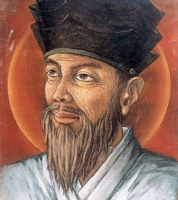
• Luca Hwang Sok-tu
• Luka, Luke, Lugar
20 September as one of the Martyrs of Korea
The only child in a wealthy family, Lucas learned about Christianity from a person he met while on the road to study in Seoul, Korea. His family opposed his interest in the faith, but he converted and eventually so did all of them. Lucas was married, worked as a teacher of Chinese literature, and served as a catechist. Co-wrote some of the works of Saint Siméon-François Berneux. Personal assistant to Saint Marie-Nicolas-Antoine Daveluy. Imprisoned and executed for his faith and works. Martyr.
1813 in Yonp'ung, Ch'ungch'ong, South Korea
beheaded on 30 March 1866 in Galmaemot, Boryeong, Chungcheong-do, South Korea
6 May 1984 by Pope John Paul II
https://catholicsaints.info/saint-lucas-hwang-sok-tu/
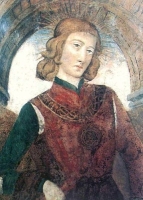
• Amadeus IX
• Amedee...
27 April (France)
Member of the royal house of Piedmont. Duke of Savoy (an area of modern France). Known as a just and charitable ruler, he promoted the Church in his realm and personal holiness in his subjects.
1 February 1435 in Thonon-les-Bains, France
30 March 1472 at Vercelli, Italy of natural causes
royal house of Piedmont
• duke distributing alms from a sack
• collar of the Supreme Order of the Most Holy Annunciation
https://catholicsaints.info/blessed-amadeus-of-savoy/
• Cronan of Balla
• Cuan, Mochua, Moncan
Educated at Bangor Abbey under Saint Comgall of Bangor. Founded a monastery at Gael, among the Feara Rois of Louth and Monaghan. Travelled to Fore, then Hy-Many in the country of Connaught (all these places are in Ireland). Founded the diocese and abbey of Balla, County Mayo, Ireland in 616, and served as its first abbot-bishop; a tower and altar from the monstery are all that remain of the original structures. Miracle worker. Confessor of the faith. Lived to be nearly 100.
6th century in Ulster, Ireland
30 March 637 of natural causes
https://catholicsaints.info/saint-cronan-mochua/
• Regulus of Saint Andrew
• Riagal, Riaghail, Riaghai, Rule
17 October (Aberdeen Breviary)
Bishop of Patras, Greece. Custodian of the relics of Saint Andrew the Apostle. In 345 he received a vision telling him to take the relics to the west, and to found a church with the name Saint Andrew. He and some companions wandered to the west, and in 347 landed at Kilrimont where he built the church, the earliest in Scotland. Regulus is commemorated in the Aberdeen Breviary.
Kylrewni, Scotland
https://catholicsaints.info/saint-regulus-of-scotland/
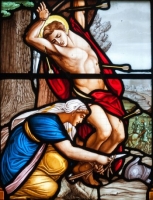
Married to Saint Castulus of Rome. Widow. Healed the arrow wounds of Saint Sebastian, and tried unsuccessfully to talk him into leaving Rome.
tending to Saint Sebastian
https://catholicsaints.info/saint-irene-of-rome/
Clino, Clinio
Benedictine monk at Monte Cassino Abbey. Abbot of Saint Peter's abbey near Pontecorvo, Italy.
Greek
relics at Pontecorvo, Italy
https://catholicsaints.info/saint-clinius-of-pontecorvo/
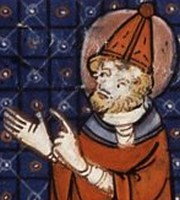
Monk and then abbot at the Saints Cosmas and Damian Abbey in Auxerre, France.
c.462
https://catholicsaints.info/saint-mamertinus-of-auxerre/
Rieul, Rule
First bishop of Civitas Silvanectium, Gaul (modern Senlis, France).
Greece
c.260 at Senlis, France
Senlis, France
https://catholicsaints.info/saint-regulus-of-senlis/
Father of Saint Balbina of Rome. Jailer of Pope Saint Alexander I who brought him to the faith. Martyred in the persecution of Hadrian.
martyred c.117 in Rome, Italy
https://catholicsaints.info/saint-quirinus-the-jailer/
Donate, Donino, Donnino
Martyr.
4th century Thessalonica, Macedonia (in modern Greece)
https://catholicsaints.info/saint-domnino-of-thessalonica/
Ferguisius, Fergustus
Sixth century bishop of Downpatrick, Ireland.
583 of natural causes
https://catholicsaints.info/saint-fergus-of-downpatrick/
Osburgh of Coventry
First abbess of a convent founded by King Canute in Coventry, England.
c.1018
https://catholicsaints.info/saint-osburga-of-coventry/
Pacificus
Abbot of a monastery in Saxony. Bishop of Werden, Germany.
c.788
https://catholicsaints.info/saint-patto-of-werden/
Sixth century bishop of Orléans, France.
https://catholicsaints.info/saint-pastor-of-orleans/
Abbot and Bishop of Disert Tola in Meath, Ireland.
c.733
https://catholicsaints.info/saint-tola/
Fourth-century Christians who were exiled, branded on the forehead, imprisoned, tortured, impoverished and murdered during the multi-year persecutions of the Arian Emperor Constantius.
between 351 and 359 in Constantinople
https://catholicsaints.info/martyrs-of-constantinople-30-march/
A group of Christians martyred together - Achaicus, Domninus, Palotinus, Philocalus and Victor.
304 in Thessalonica, Greece
https://catholicsaints.info/martyrs-of-thessalonica/
• Dodone of Haske
• Gregory Ascissio
• John Gbec'i
• Martin de Salvitierra
• Verono of Lembeek
CatholicSaints.Info Portable Edition